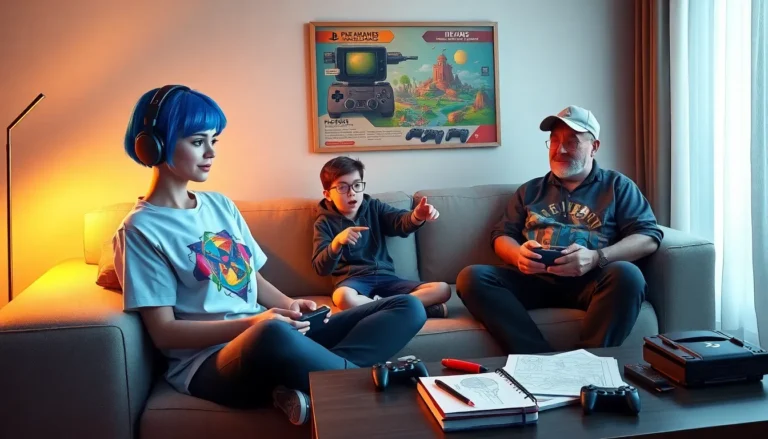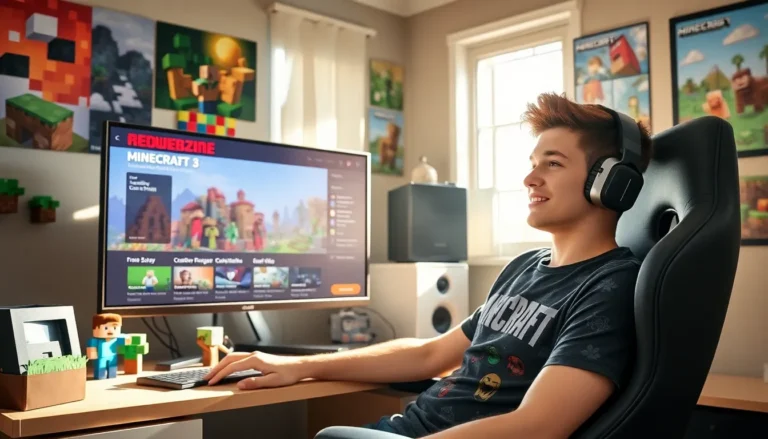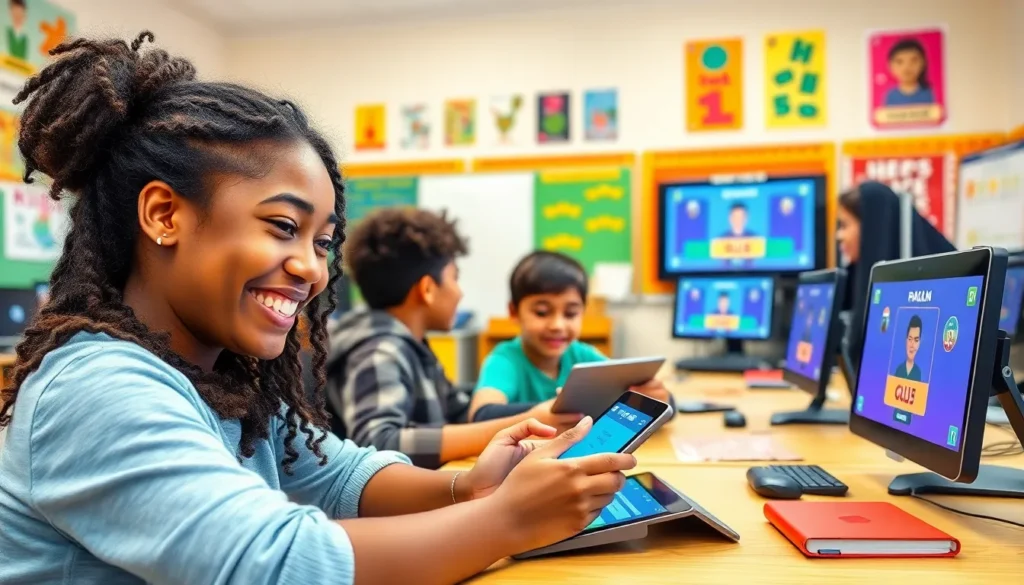Table of Contents
ToggleIn a world where learning can sometimes feel as exciting as watching paint dry, edtech games swoop in like superheroes, turning dull lessons into thrilling adventures. Imagine students tackling math problems while dodging virtual dragons or mastering history by leading a digital expedition. These games don’t just entertain; they engage and inspire, making education a blast instead of a chore.
As classrooms evolve, so do the tools that make learning fun. Edtech games are revolutionizing the way knowledge is delivered, blending education with play in a way that keeps students coming back for more. With a sprinkle of competition and a dash of creativity, these interactive experiences are reshaping the educational landscape, proving that learning can truly be a game-changer.
Overview of Edtech Games
Edtech games emerge as a vital tool in modern education. These interactive resources promote active learning, enhancing students’ engagement with academic content. Users encounter challenges that require critical thinking and problem-solving skills.
Games such as Kahoot! and Quizlet Live bring competition into classrooms, making learning social and dynamic. Students take part in real-time quizzes, which fosters collaboration among peers. Outcomes often translate into improved retention of knowledge as players actively process information.
Diverse subjects are represented in edtech games, from mathematics to history, allowing for broad educational benefit. Games use adaptive learning technology, catering to individual student needs. This customization helps educators address different learning styles and paces.
Incorporating elements of storytelling, many edtech games transport players into immersive learning environments. Scenarios arise that mimic real-life situations, encouraging practical application of knowledge. Research indicates that this contextual learning significantly boosts student motivation.
Data from the EdTech Digest shows that 70% of teachers recognize improved student performance through game-based learning. Engaging with edtech games, learners expand foundational skills while enjoying the process. Teachers report increased classroom participation when using these tools.
Integrating technology and play, edtech games reshape educational landscapes. They cultivate a culture of continuous learning through immediate feedback and playful interaction. In doing so, they prepare students for future challenges by equipping them with essential skills.
Benefits of Edtech Games
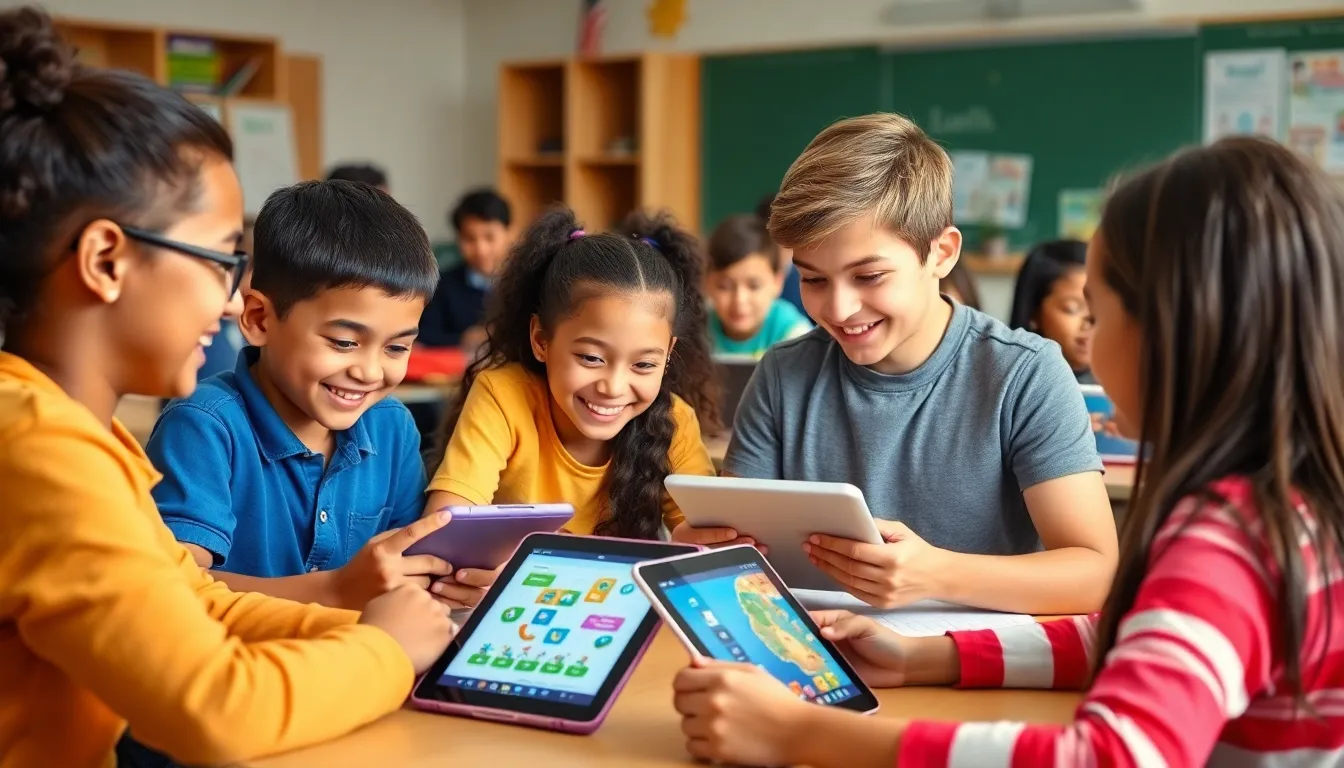

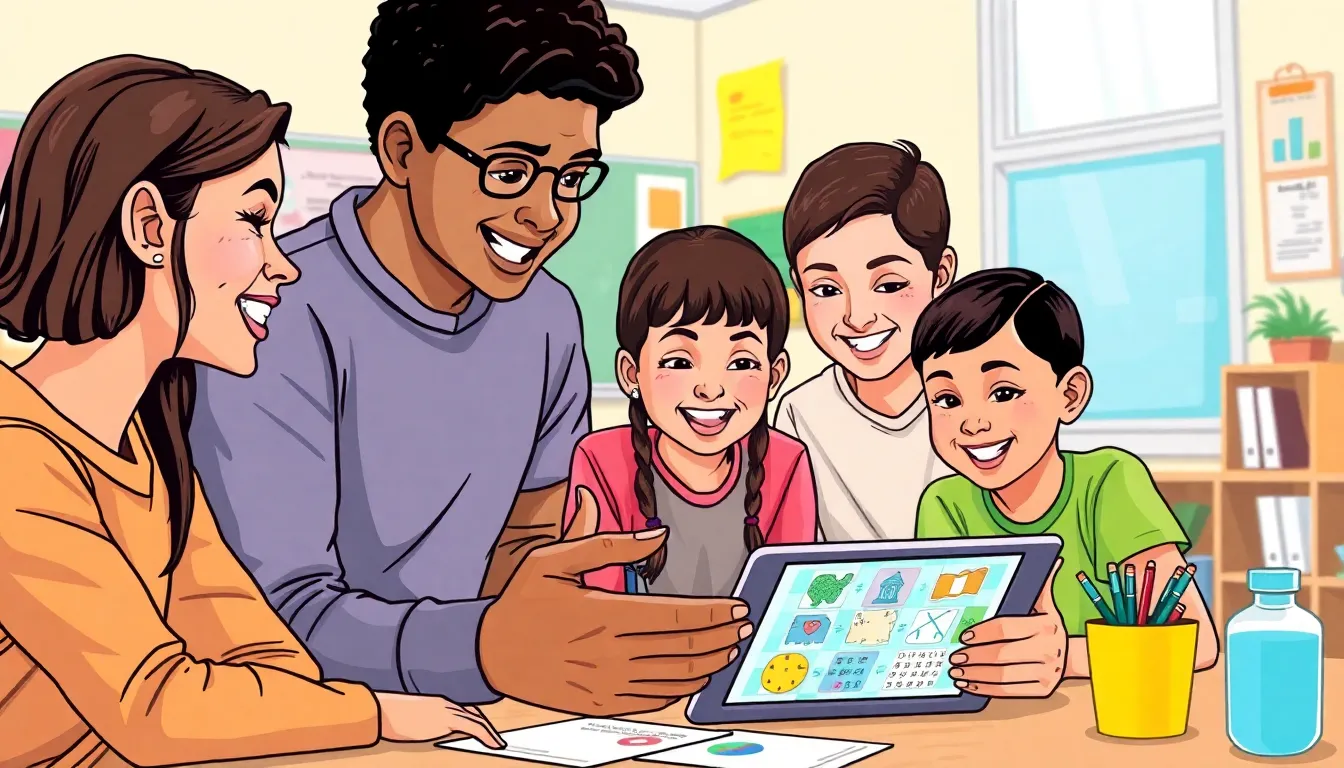
Edtech games offer numerous advantages in educational settings, making a significant impact on student learning experiences.
Enhancing Learning Outcomes
Edtech games effectively enhance learning outcomes by incorporating adaptive technology. Students encounter challenges tailored to their needs, enabling personalized learning experiences. Research shows that game-based learning increases retention rates and understanding. These games transform traditional educational content, facilitating deeper engagement and comprehension. They help educators track progress, identifying areas where students excel or struggle.
Engaging Students
Engagement increases as edtech games introduce elements of competition and teamwork. Students thrive in environments that encourage cooperation, driving motivation to participate actively. Games create captivating scenarios that draw students in, turning passive learning into interactive experiences. Many students exhibit increased enthusiasm when working through game-based tasks. Educators note a marked rise in classroom participation when games are part of the curriculum.
Developing Skills
Edtech games foster essential skill development alongside academic knowledge. Students sharpen critical thinking and problem-solving abilities through engaging puzzles and challenges. Social skills also improve as learners collaborate with peers, working towards common goals. Games promote strategic planning, encouraging students to anticipate outcomes and adapt their strategies. These skills prepare learners for future endeavors, whether in higher education or the workforce.
Types of Edtech Games
Edtech games encompass various formats that enhance learning experiences. Each type uniquely engages students, catering to different learning needs.
Educational Video Games
Educational video games immerse students in interactive storytelling that reinforces academic concepts. These games specifically target subjects like math, science, and language arts, providing an engaging way to practice skills. Players often encounter challenges that require strategic thinking and problem-solving, resulting in improved critical thinking abilities. Research shows 70% of teachers observe boosts in student motivation when using these games. High-quality examples include Minecraft: Education Edition and Prodigy Math, which allow learners to explore while they learn.
Mobile Learning Apps
Mobile learning apps give students access to educational content anytime and anywhere. These apps often provide gamified experiences that reinforce classroom learning through quizzes and puzzles. With over 90% of students using mobile devices for learning, apps like Duolingo and Kahoot! enable personalized learning paths that fit individual skill levels. Adaptive features help address various learning styles, making it easier for users to stay engaged. Instant feedback within these apps enhances motivation and encourages a proactive approach to education.
Interactive Learning Platforms
Interactive learning platforms transform traditional education through collaborative gameplay and peer engagement. Platforms such as Nearpod and Quizlet Live offer opportunities for real-time interaction between students and instructors. Teachers can create personalized learning experiences by integrating multimedia content and assessments tailored to specific subjects. Engagement levels soar when students can compete or collaborate in teams, promoting healthy competition. These platforms facilitate deeper understanding and retention by blending entertainment with educational content.
Implementing Edtech Games in the Classroom
Integrating edtech games into classroom activities enhances engagement and facilitates active learning. Educators can leverage various tools and resources to maximize the effectiveness of these games.
Tools and Resources
Multiple platforms cater to edtech game implementation. Kahoot! offers quizzes that promote competition and instant feedback. Quizlet Live engages students through team-based learning. Scratch provides a platform for coding games that enhance creativity. Additional resources, like Nearpod, enable interactive lessons with real-time assessment. Teachers should explore these tools to find which best suits their teaching style and student needs.
Best Practices for Educators
Educators can adopt several best practices when implementing edtech games. Start by setting clear learning objectives to guide gameplay. Incorporate games that align with curriculum goals for better integration. Encourage collaboration among students to foster teamwork and communication skills. Monitor student progress with analytics offered by these games. Regularly gather feedback to refine the gaming experience and address diverse learning styles. Remaining flexible and adaptive during implementation ensures optimal results for student engagement and outcomes.
Challenges and Considerations
Edtech games present various challenges that educators and students face in modern learning environments. Addressing these issues is essential for maximizing the potential of gamified learning.
Screen Time Concerns
Screen time impacts student health and attention spans. Experts recommend monitoring daily device usage to prevent negative effects. Research shows that excessive screen time can lead to issues like eye strain and decreased physical activity. Balancing game time with offline activities creates a healthier learning experience. Integrating edtech games wisely ensures that students engage in active learning without spending too much time on devices.
Accessibility Issues
Accessibility remains a significant concern in edtech. Not every student has equal access to technology or high-speed Internet. Disparities in resources create gaps in educational opportunities. Developers must prioritize creating games that function well on various devices. Offering offline capabilities can help reach students in underserved areas. Adopting inclusive design principles ensures all learners can participate fully and benefit from edtech games.
Edtech games are revolutionizing the way students engage with learning material. By blending education with interactive play, these tools foster a dynamic environment that encourages exploration and collaboration. As students navigate challenges and competitions, they not only absorb knowledge but also develop critical skills essential for their future.
The integration of adaptive technology ensures that each learner’s unique needs are met, promoting inclusivity and personalized experiences. While challenges like screen time and accessibility remain, the benefits of edtech games far outweigh these concerns. They create a vibrant educational landscape where learning is not just effective but also enjoyable. Embracing this innovative approach can lead to lasting improvements in student motivation and performance.




